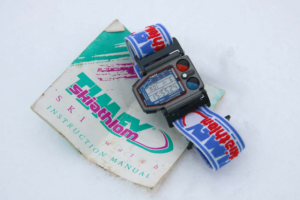Japanese milk bread, also known as shokupan, has become a beloved staple in Western kitchens for its unparalleled softness and versatility. Whether as a base for luxurious French toast or an upgrade to a classic sandwich, its pillowy texture has captured the hearts of home bakers and professional chefs alike. Even culinary icons like Martha Stewart have embraced milk bread for its ability to elevate everyday dishes.
But what gives milk bread its unique fluffiness and extended shelf life? The answer lies in the tangzhong method, a simple yet revolutionary baking technique with Chinese origins.
What Is Tangzhong?
Tangzhong is a method of creating a starch gel that is incorporated into bread dough to achieve an airy, tender texture. By cooking a portion of the flour and water (or milk) mixture until it thickens into a paste, tangzhong transforms the bread-making process. The resulting gel helps trap moisture in the dough, keeping the bread soft and fresh for longer.
How It Works
When flour is heated with liquid, the starch in the flour absorbs the water and swells, forming a gel. This process prehydrates the flour, allowing the dough to retain more water during baking. The additional hydration creates bread that is:
•Softer: Tangzhong enhances the elasticity of the dough, leading to a fluffier crumb.
•Longer-lasting: Bread made with tangzhong resists staling because of the added moisture.
•Easier to handle: The dough becomes more pliable, making it easier to shape and work with.
Tangzhong vs. Yudane: What’s the Difference?
While tangzhong is often compared to yudane, a similar Japanese technique, there are key differences between the two methods:
•Tangzhong: The flour and liquid are cooked together over heat to create a gel.
•Yudane: Boiling water is poured over the flour and mixed to form a paste, without direct cooking.
Both techniques achieve similar results, but tangzhong’s cooked approach allows for greater precision and consistency.
Making Tangzhong at Home
The beauty of tangzhong is its simplicity. Home bakers can easily replicate the process using basic ingredients and tools.
Ingredients:
•2 tablespoons of bread flour
•6 tablespoons of water (or milk, for a richer flavor)
Instructions:
1.Combine the flour and liquid in a small saucepan.
2.Heat the mixture over medium heat, stirring constantly.
3.Once the mixture thickens and forms a paste (approximately 65°C or 150°F), remove it from the heat.
4.Allow the tangzhong to cool before incorporating it into your bread dough.
This simple step can transform any bread recipe into a soft, pillowy delight.
Why Milk Bread Is Perfect for French Toast
Milk bread’s softness and slightly sweet flavor make it an ideal choice for French toast. Its ability to absorb liquid without falling apart allows it to soak up custard while maintaining its structure, resulting in a perfectly creamy interior and golden exterior.
Celebrity Endorsements
Martha Stewart and other chefs have praised milk bread for its versatility, often using it in recipes that require a sturdy yet tender base. Beyond French toast, milk bread shines in dishes like bread pudding, grilled cheese, and Japanese-style sandwiches (sandos).
The Growing Popularity of Milk Bread
The rise of Japanese milk bread in Western cultures reflects a broader trend toward globalized baking traditions. Consumers are increasingly seeking out foods that combine tradition with innovation, and milk bread fits the bill perfectly. Its use of tangzhong represents a blending of Chinese and Japanese culinary practices, highlighting the interconnectedness of Asian cuisines.
A Bread for All Occasions
Milk bread’s versatility has made it a favorite in both sweet and savory applications. From artisan bakeries to home kitchens, its popularity continues to grow as more people discover the magic of tangzhong.
Impression
Japanese milk bread’s iconic fluffiness is no mystery once you understand the tangzhong method. This simple yet effective technique has transformed bread baking by delivering unparalleled softness, improved shelf life, and ease of preparation. Whether you’re crafting French toast, sandwiches, or simply enjoying a slice with butter, milk bread is a true celebration of culinary ingenuity.
For bakers and bread lovers alike, tangzhong opens the door to creating bakery-quality loaves at home, ensuring that the love for Japanese milk bread will only continue to rise.
No comments yet.








